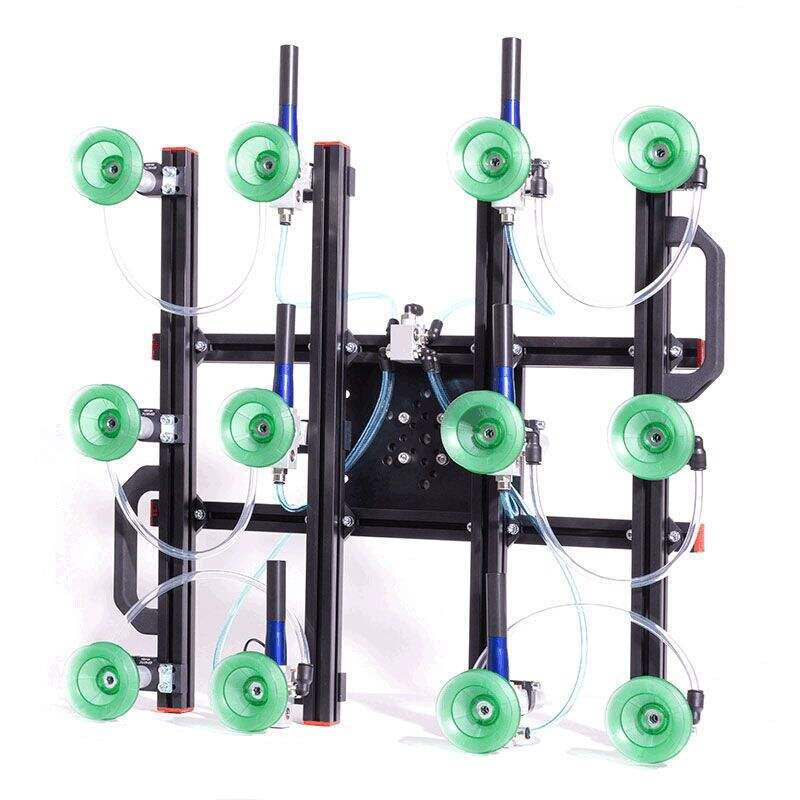End Of Arm Tooling (EOAT) Kullanım Rehberi: Robotik Uygulamalar İçin Nihai El Kitabı
Giriş
End-of-Arm Tooling (EOAT), endüstriyel robotlar ile çalışma ortamları arasındaki kritik bağlantıyı temsil eder. Sanayi 5.0'a geçişle birlikte EOAT sistemleri basit mekanik eklentilerden, robot işlevselliğini belirleyen karmaşık entelektüel alt sistemlere dönüşmüştür. Bu kapsamlı kılavuz, 2025 verilerine göre yıllık %12,7 CAGR büyüme hızıyla 6,8 milyar ABD dolarına ulaşması beklenen küresel pazarı yansıtan güncel endüstriyel talepler doğrultusunda EOAT teknolojilerini inceler (Robotik Endüstrisi Birliği).
Bölüm 1: Temel EOAT Sınıflandırmaları
1.1 Mekanik Penseler
Paralel Çeneli Penseler: 2.500N’e kadar güç kapasiteleriyle kutu taşıma işlemleri için idealdir
Açısal Penseler: 120° dönme yayları ile dar alanlarda çalışmak üzere tasarlanmıştır
Uyum Sağlayan Pnömatik Penetralar: Sensör kontrollü parmak konumlandırması (±0,05 mm tekrarlanabilirlik)
1.2 Vakum Sistemleri
Venturi tabanlı Ejektörler: Hareketli parçalar olmadan 90 kPa vakum üretimi
Elektrikli Vakum Pompaları: %40 daha düşük enerji tüketimi ile enerji tasarrufu sağlayan çözümler
Kobomatik Emme Başlıkları: Gıda/Eczacılık uygunluğu için silikon içermeyen tasarım
1.3 Özel Aletler
Alet Tipi Uygulaması 2025 İnovasyonu
Manyetik EOAT Otomotiv panelleri, kendiliğinden ayarlayan manyetik akı yoğunluğu
İğne Penetraları Tekstil taşıma, antistatik karbon fiber iğneler
Kriyojenik Aletler, Gıda işleme, LN2 uyumlu yalıtım
Bölüm 2: Yeni Nesil EOAT Teknolojileri
2.1 Akıllı Takım Devrimi
Kuvvet/Tork Sensörleri: 0,1N çözünürlük sağlayan entegre gerinim ölçerler
Görsel Destekli Takımlar: 5G kenar işleme ile çalışan takıma monte kameralar
Otomatik Tanı Sistemleri: Downtime'ı %35 azaltan prediktif bakım algoritmaları
2.2 Hibrit Takım Çözümleri
Yeni çıkan "Çoklu Modlu EOAT" kavramı şunları bir araya getirir:
Mekanik merkezleme ile vakum kaldırma
Piezoelektrik titreşim kontrolüne sahip manyetik taban
Sıcaklık regülasyonuna sahip konformal tutucular
Bölüm 3: Seçim Yöntemleri
3.1 Kritik Parametreler Matrisi
┌─────────────────┬───────────────────────┬───────────────────────┐
│ Parametre │ Otomotiv Standardı │ Elektronik Standardı │
├─────────────────┼───────────────────────┼───────────────────────┤
│ Yük Kapasitesi │ 15-50kg │ 0.1-5kg │
│ Döngü Süresi │ 3-8 saniye │ <1 saniye │
│ Temizlik │ IP54 │ ISO Sınıf 5 temiz oda│
│ Uygunluk │ ISO/TS 15066 │ ESD S20.20 │
└─────────────────┴───────────────────────┴───────────────────────┘
3.2 Maliyet-Fayda Analizi
Takım Değiştiriciler, 7 ay içinde şu şekilde yatırım geri dönüşü sağlar:
değişim süresinde %83 azalma
stok envanterinde %40 azalma
Yeniden yapılandırılabilir EOAT yeni ürün tanıtım maliyetlerini %60 azaltır
Bölüm 4: Sektöre Özel Uygulamalar
4.1 Otomotiv İmalatı
Vaka Çalışması: BMW'nin Leipzig fabrikası çok fonksiyonlu bir EOAT'e sahip olacak şekilde kurulmuştur ve bu EOAT şunları gerçekleştirir:
Parça varlık doğrulaması
Yüzey kusurları tarama
Hassas yerleştirme (±0,03 mm)
İş istasyonu sayısını %30 azaltmak
4.2 İlaç Uygulamaları
Sterilize Edilebilir Takımlar: 300+'dan fazla siklusa dayanabilen otoklavlanabilir bileşenler
İzolasyon Bariyerleri: Eldiven kutusu ile uyumlu manipülatörler
Kirlilik İzleme: Gerçek zamanlı partikül sayıcılar
Bölüm 5: Bakım ve Optimizasyon
5.1 Tahmini Bakım Çerçevesi
5.2 Kalibrasyon Protokolleri
Lazer Takip Sistemi: Yıllık hacimsel doğruluk doğrulaması
Kuvvet Kalibrasyonu: Üç aylık NIST'e dayalı sertifikasyon
Isıl Kompanzasyon: ±5°C sapmanın ötesindeki işlemler için gerekli
Bölüm 6: Gelecekteki Geliştirme Yönelimleri
Kendini Onaran Malzemeler: Mikrokapsül onarımına sahip polimer kompozitler
Nöromorfik Hesaplama: Cihaz üzerinde <5ms gecikmeli karar verme
Kuantum Sensörler: Alt mikronluk konumlandırma bilinci
Sürdürülebilir Tasarım: 2030 yılına kadar %95 oranında geri dönüştürülebilir takımlar zorunluluğu
Sonuç
EOAT, robotik aksesuarlarından değer çoğaltan sistemlere dönüşmüştür. Bu alanda birleşen yeni teknolojiler ile stratejik EOAT seçimi artık şu alanları etkilemektedir:
robotik hücre verimlilik artışının %42'si
esnek üretim kapasitesinin %67'si
kalite geliştirme girişimlerinin %89'u
İleri nesil EOAT çözümlerini benimseyen üreticiler, gelişen endüstriyel ortamda eşsiz operasyonel esneklik için kendilerini konumlandırırlar. Akıllı sensörlerin, hibrit işlevlerin ve sürdürülebilir tasarım ilkelerinin entegrasyonu, bu on yıl boyunca inovasyonu sürdürmeye devam edecektir.
Sektör Gündemi: 2025 Uluslararası Robotik Fuarı, insan-robot işbirliği ortamları için uyumlu kavrama çözümleri sergileyen 300'den fazla EOAT uzmanını ağırlayacak olup sektörün hızlı dönüşümünü yansıtmaktadır.


